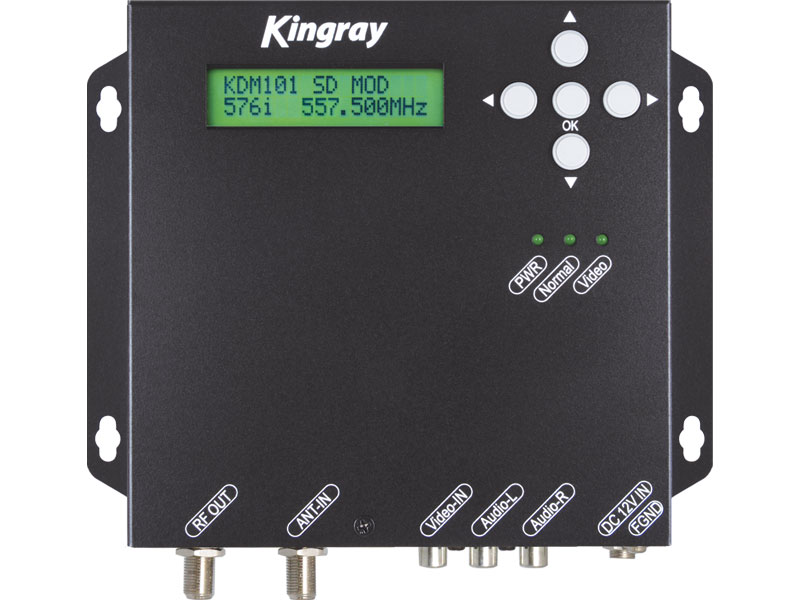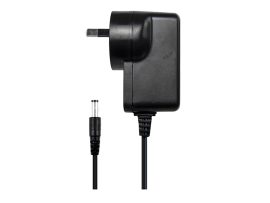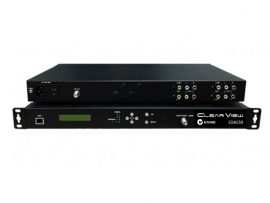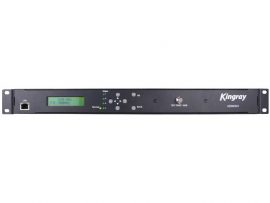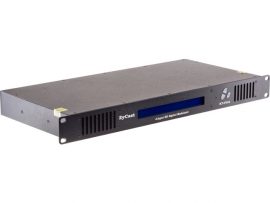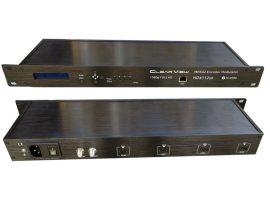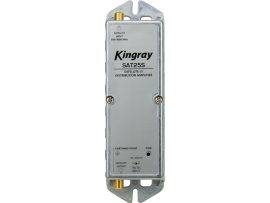Description
Kingray KDM101A AV to DVB-T Digital Modulator
The Kingray KDM101A is a digital video modulator that can convert an SD analogue AV signal to SD Digital DVB-T RF Signal.
The KDM101A is ideal for converting an analogue AV signal either from a satellite decoder, DVD, video surveillance camera or video door phone and modulating it into a digital format (DVB-T) for distribution in a TV cable network. With intuitive, simple menus, the KDM101A provides quick and easy installation.The latest intelligent electronic components combined with the latest software and hardware advances brings you a product that boasts optimum performance and reliability. A new era in affordable, reliable and quality digital modulation.
Features
Easy to program basic and advanced menus.
Adjustable colour, brightness, contrast and saturation.
Low insertion loss antenna input (1.5 dB).
Adjustable LCN, PID, NIT, PDS and TS ID.
Adjustable output level, frequency and offset.
Programmable channel name.
Selectable 2K, 8K carrier.
Variable video and audio bit rates.
Adjustable constellation, FEC and guard interval.
What’s the difference between MPEG2 and MPEG4
DVB-T (Digital Video Broadcasting – Terrestrial) is a standard for transmitting digital television signals over terrestrial (over-the-air) broadcast networks. MPEG-2 and MPEG-4 are video compression standards used in DVB-T to encode the video content.
- DVB-T MPEG-2: DVB-T MPEG-2 refers to the use of the MPEG-2 video compression standard within the DVB-T system. MPEG-2 is an older compression standard that was widely used for digital television broadcasting before the introduction of MPEG-4. It offers moderate compression efficiency, which means it requires more bandwidth to transmit video compared to MPEG-4 for the same quality. MPEG-2 provides good video quality, especially for standard definition (SD) content, and it is still compatible with many older television sets and receivers.
- DVB-T MPEG-4: DVB-T MPEG-4, on the other hand, uses the more advanced MPEG-4 video compression standard. MPEG-4 offers better compression efficiency, allowing broadcasters to transmit higher quality video using less bandwidth compared to MPEG-2. This is especially beneficial for high-definition (HD) and other bandwidth-intensive content. MPEG-4 can deliver superior video quality with the same amount of data or equivalent video quality with less data compared to MPEG-2. However, MPEG-4 requires more processing power for encoding and decoding, which means older television sets or receivers may not support MPEG-4 without a compatible decoder.
In summary, the main difference between DVB-T MPEG-2 and DVB-T MPEG-4 lies in the video compression standard used. MPEG-2 is an older standard with moderate compression efficiency but good compatibility with older devices, while MPEG-4 is a more advanced standard offering better compression efficiency for higher quality video but requiring more processing power and compatibility considerations.
How can I tell if my TV is MPEG2 or MPEG4
Early Digital TVs sold in Australia had MPEG2 DVBT Tuners. Later models have progressed to MPEG4. Any MPEG4 TV is backward compatible and will also work with MPEG2 signals. However MPEG2 TVs will not work with MPEG4 signals incuding those from MPEG4 modulators.
It is often difficult to see from the TV’s specifications if the hardware is MPEG2 or MPEG4. The easiest way is to test the TV with a normal broadcast antenna signal. New HD Channels such as Channel 70 (7HD) or Channel 31 (SBS Viceland HD) are broadcast in MPEG4. If you TV produces a black picture or an error message such as FORMAT NOT SUPPORTED, then this TV is MPEG2 only.
To correct a MPEG2 only TV, a new DVBT Set top box can be used to tune the RF signal and convert it to a HDMI input on the TV.

